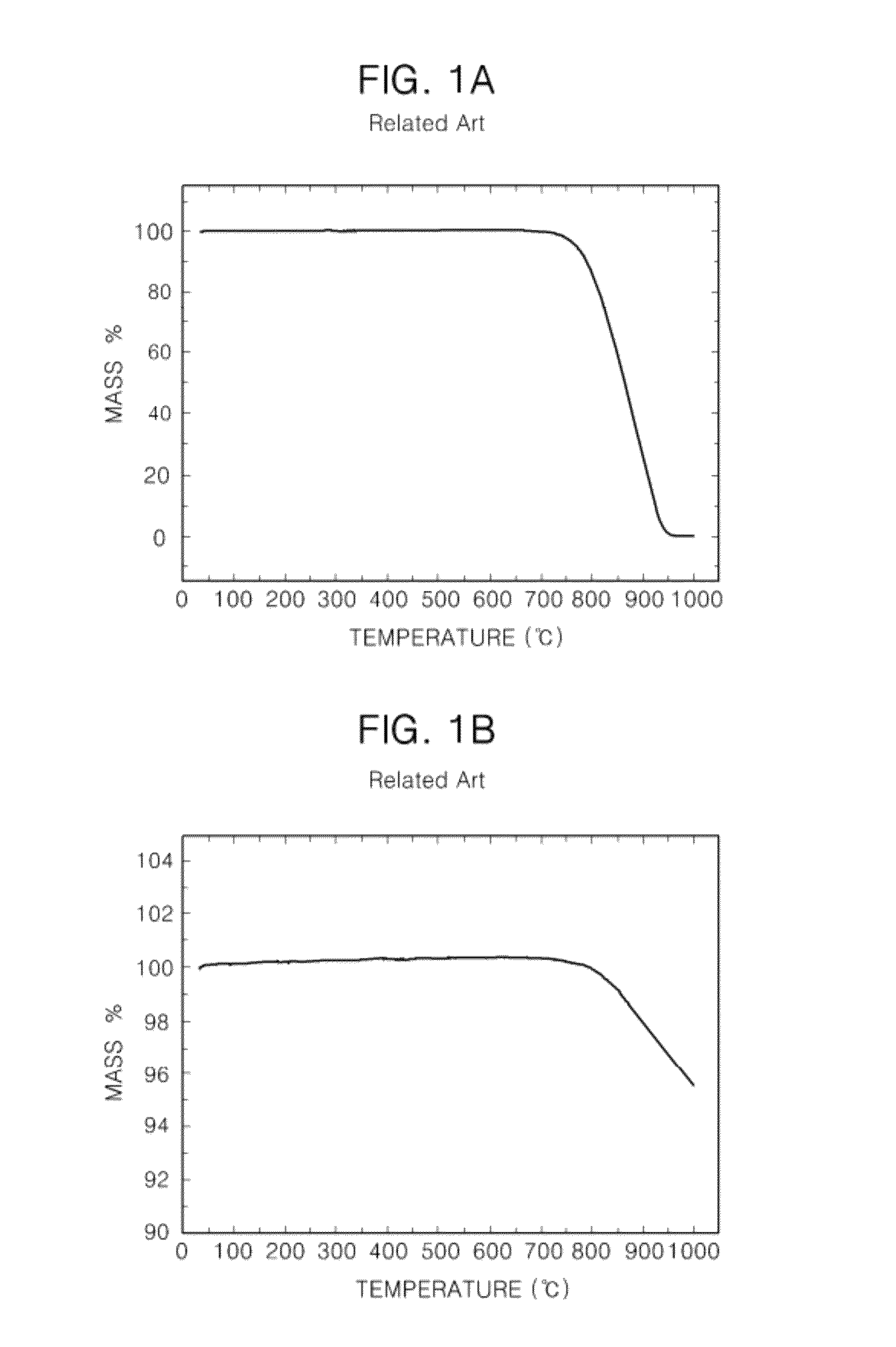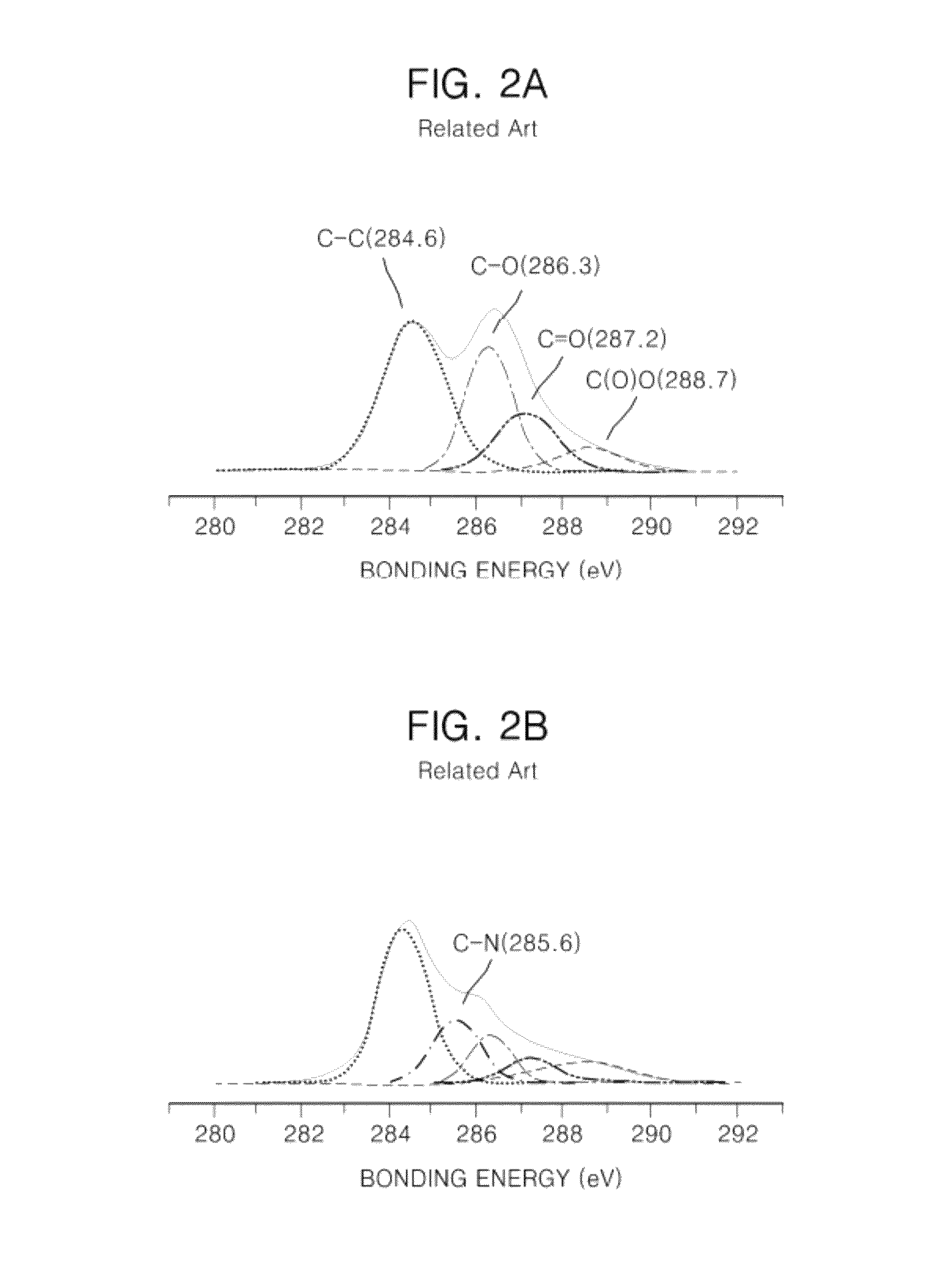Method for producing graphenes through the production of a graphite intercalation compound using salts
a technology of intercalation compound and graphene, which is applied in the field of graphene production, can solve the problems of high cost, high cost, and uneven shape of detached graphene sheets, and achieve the effects of high quality, reduced graphene price, and high quality
- Summary
- Abstract
- Description
- Claims
- Application Information
AI Technical Summary
Benefits of technology
Problems solved by technology
Method used
Image
Examples
first experimental example
[0087]In the present experimental example, K ions as alkaline metals were selected as ions to be inserted in intercalation of graphite, and a salt mixture of KI and KOH was used as alkaline metal salts to provide K ions.
[0088]FIG. 9 is a graph showing phases of KI and KOH. In FIG. 9, when two or more salts were mixed at a predetermined mole ratio, the melting point of the salt mixture was lowered. Since KI and KOH each have a low eutectic point of 250° C., as shown in FIG. 9, by heating KI and KOH at a temperature of 250° C. or higher at an eutectic point mole ratio, graphite may be dispersed without adding a solvent to the KI and KOH.
[0089]FIG. 10A is a photo showing the case that KI, KOH, and highly oriented pyrolytic graphite (HOPG) pieces were put in a capsulated container and were heated at 250° C. and then the capsulated container was opened. In FIG. 10A, since the HOPG pieces were dispersed, the graphene was produced. FIG. 10B is a photo showing the case that THF was put in K...
second experimental example
[0092]In the second experimental example, a salt mixture of KI and KCl was used as alkaline metal salts to provide K ions.
[0093]Since KI and KCl each have a high eutectic temperature of 599° C., as shown in FIG. 12, graphite cannot be dispersed only using salts; however, two salts were dissolved in dichlorobenzene (DCB) and then were heated and thus graphite was dispersed.
[0094]A specific process is as follows. When KI, KCl, DCB, and graphite were put in a container and the container was capsulated, the capsulated container was heated at 250° C. so as to produce a K-GIC. After that, when the K-GIC was put in ethanol, inserted K was removed, and the graphene was produced.
[0095]When salts were dissolved in a solvent, the salts exist as positive ions and negative ions and are neutral in an electrical aspect. Although a reaction in which alkaline metals are inserted in intercalation of graphite is a voluntary reaction, K+ cannot be inserted in intercalation of graphite while an electric...
third experimental example
[0104]In the third experimental example, the graphene was produced by obtaining alkaline metals from alkaline metal salts. K was selected as alkaline metals to be inserted in intercalation of graphite, and a reaction between KI as alkaline metal salts and DCB as a solvent K was used in order to obtain K.
[0105]First, FIG. 19 is a view of a method for producing graphene according to the present experimental example.
[0106]As shown in FIG. 19, KI, DCB, and graphite were put in a container, and the container was capsulated, and the capsulated container was heated at 300° C. 1-iodo-2-chloro-benzene, and K and Cl2 were obtained through a reaction between KI and DCB. K was inserted in intercalation of graphite so as to produce a K-GIC. After that, when the K-GIC is put in ethanol, inserted K was removed, and the K-GIC was dispersed, and thus the graphene was produced.
[0107]Gas chromatography / mass spectroscopy was performed in order to check whether 1-iodo-2-chloro-benzene is actually formed...
PUM
| Property | Measurement | Unit |
|---|---|---|
| temperature | aaaaa | aaaaa |
| temperature | aaaaa | aaaaa |
| temperature | aaaaa | aaaaa |
Abstract
Description
Claims
Application Information
 Login to View More
Login to View More - R&D
- Intellectual Property
- Life Sciences
- Materials
- Tech Scout
- Unparalleled Data Quality
- Higher Quality Content
- 60% Fewer Hallucinations
Browse by: Latest US Patents, China's latest patents, Technical Efficacy Thesaurus, Application Domain, Technology Topic, Popular Technical Reports.
© 2025 PatSnap. All rights reserved.Legal|Privacy policy|Modern Slavery Act Transparency Statement|Sitemap|About US| Contact US: help@patsnap.com



